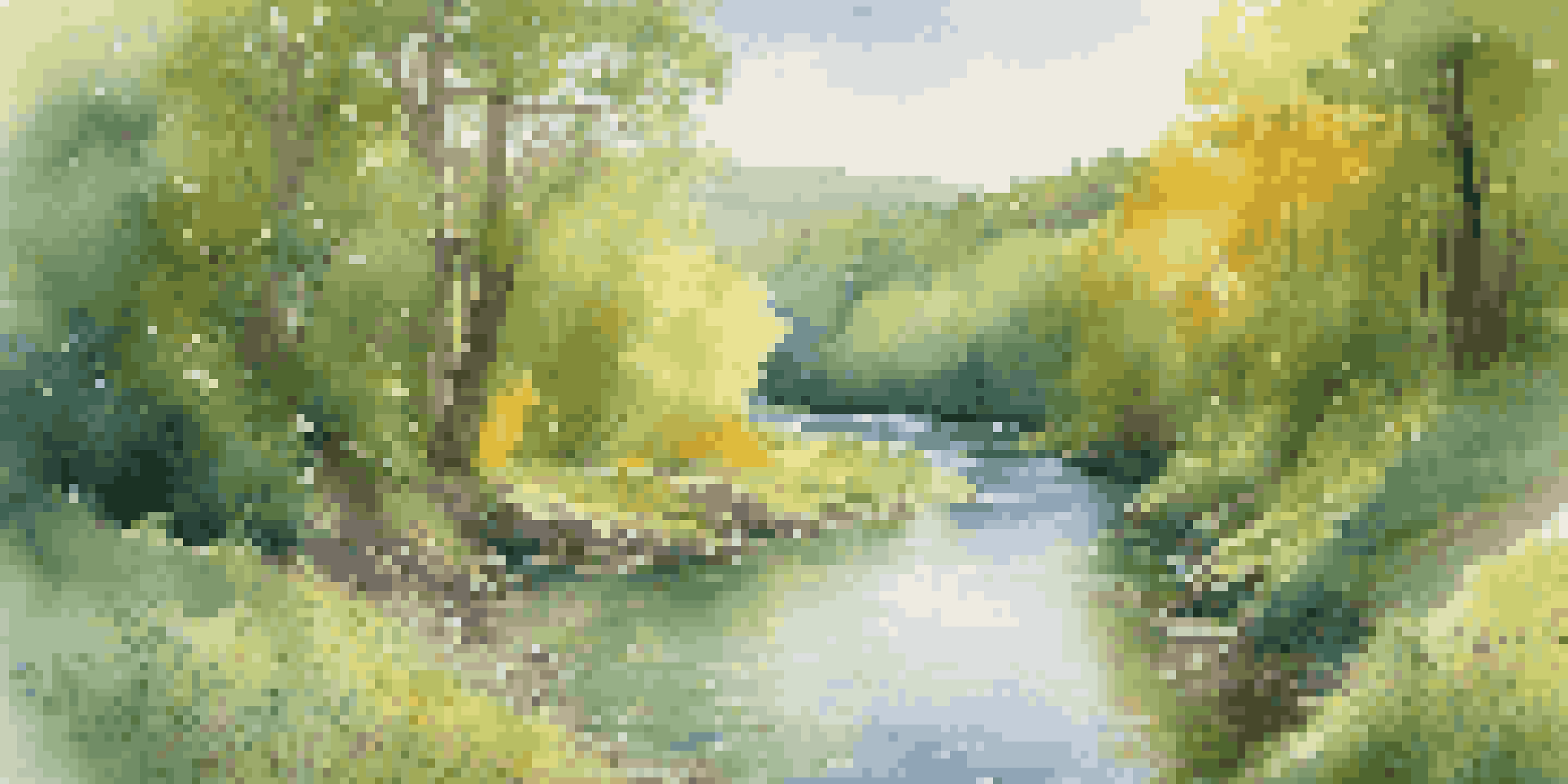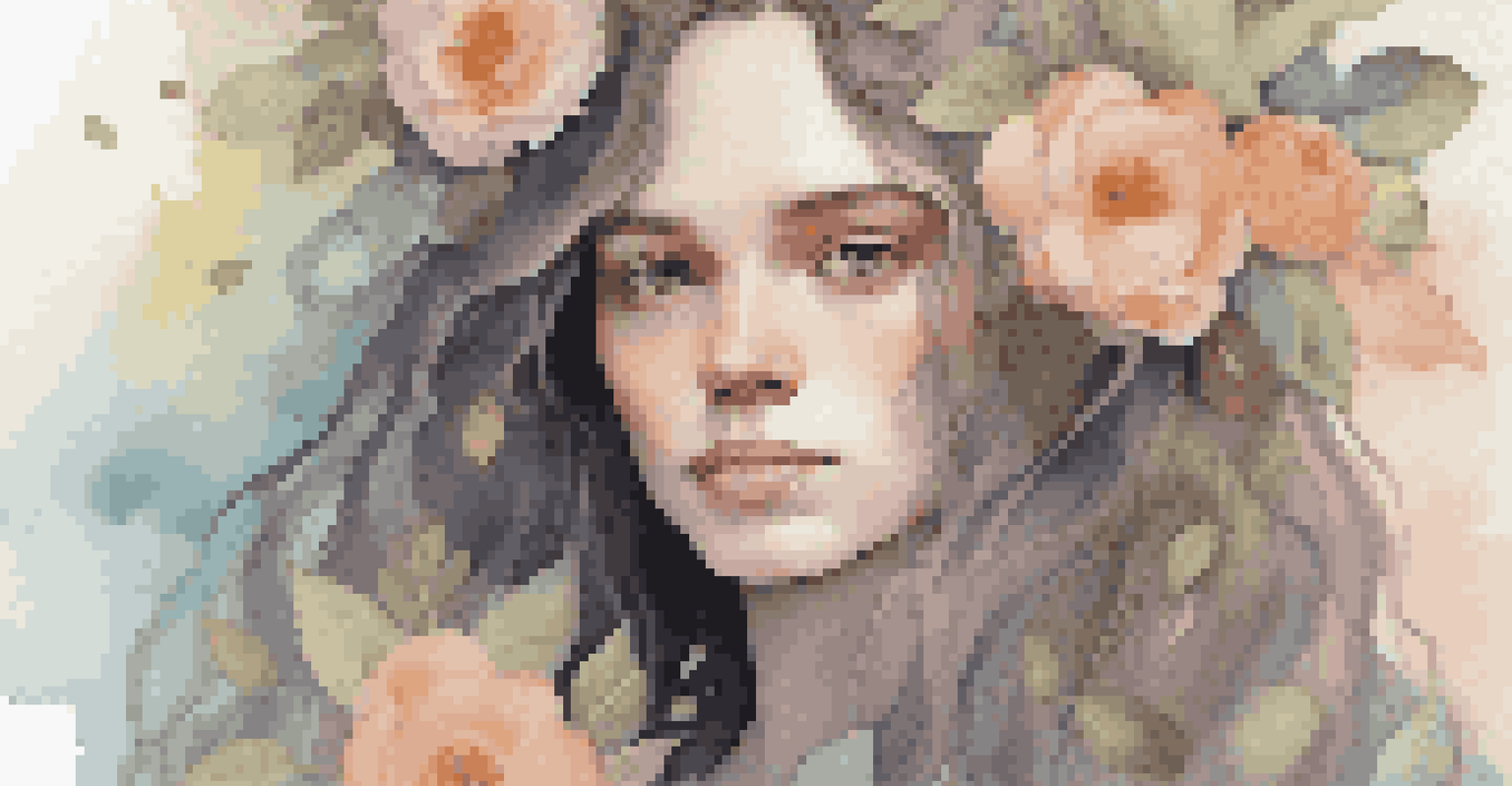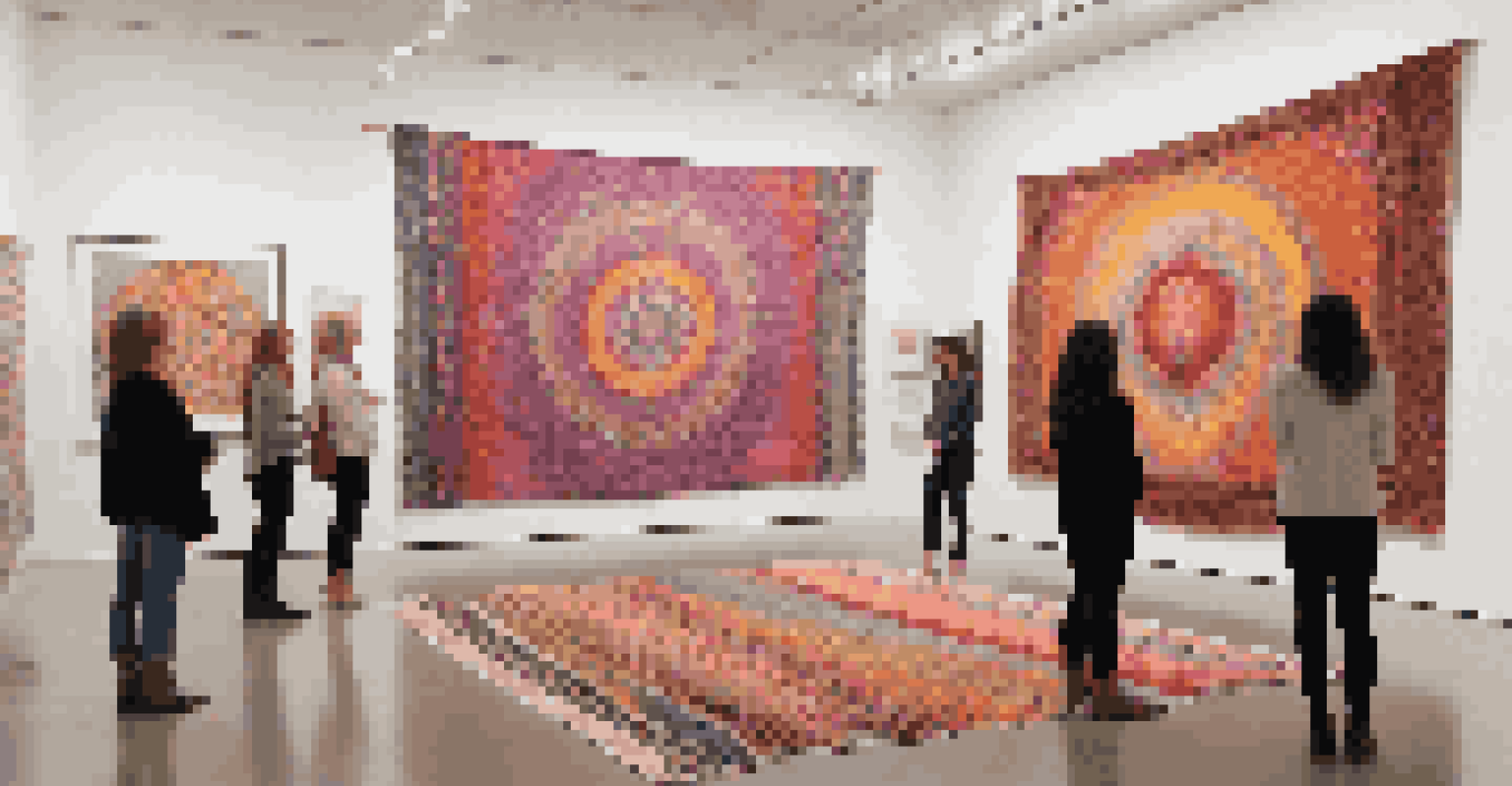Gender Identity in Art: A Historical Perspective

Understanding Gender Identity: A Foundation for Art
Gender identity refers to how individuals perceive themselves and what they call themselves, which can differ from their biological sex. This concept has evolved significantly over the years, influencing various forms of expression, including art. Artists have often used their work to explore and challenge societal norms surrounding gender, making it a rich area of study.
Art is a reflection of the society in which it exists, and it has the power to change perceptions and challenge norms.
From the androgynous figures of ancient mythology to modern interpretations of gender fluidity, art has served as a mirror reflecting the evolving understanding of gender identity. This evolution highlights the importance of context—social, cultural, and historical—in shaping how gender is perceived and represented. Thus, art becomes a powerful tool for both self-expression and societal commentary.
In examining historical perspectives on gender identity in art, we can better appreciate how artists have navigated their own identities and those of others. This exploration not only enhances our understanding of the art itself but also the broader societal changes that have accompanied shifts in gender perception.
Ancient Art: Early Representations of Gender
In ancient civilizations, gender representations in art often reflected the societal roles assigned to men and women. For instance, the Greeks depicted strong, heroic male figures in their sculptures, while women were often portrayed in domestic settings. Yet, there were exceptions, such as the depictions of goddesses who embodied both strength and femininity, hinting at a more complex understanding of gender.

Artifacts from various cultures show that gender identity was not always strictly binary. In some Indigenous cultures, for example, two-spirit individuals were honored and represented in art, highlighting a more fluid understanding of gender. These historical examples lay the groundwork for how we view gender in art today, challenging the rigid binary that has often dominated Western narratives.
Art Reflects Evolving Gender Views
Art has historically mirrored the changing perceptions of gender identity, serving as a medium for both self-expression and societal commentary.
As we delve deeper into ancient art, we see that these early representations were often laden with symbolism. Artists used their work to convey not just physical attributes, but also the spiritual and social significance of gender roles, providing a rich tapestry of insights into ancient beliefs and practices.
The Renaissance: Gender and Artistic Innovation
The Renaissance marked a significant shift in how gender was portrayed in art, emphasizing individualism and human emotion. Artists like Leonardo da Vinci and Michelangelo explored the human form in unprecedented ways, often focusing on idealized male figures. However, women began to emerge in the art world, both as subjects and creators, challenging traditional notions of gender roles.
Art enables us to find ourselves and lose ourselves at the same time.
One notable figure is Artemisia Gentileschi, a Baroque artist whose works often depicted strong female characters from biblical and mythological tales. Through her art, Gentileschi not only asserted her identity as a female artist in a male-dominated field but also provided commentary on women's strength and resilience. Her contributions exemplify how the Renaissance laid the groundwork for future explorations of gender in art.
As artists in this era pushed boundaries, they also paved the way for discussions on gender fluidity and identity. The nuanced portrayals of men and women during the Renaissance reflect a growing awareness of the complexities of gender, hinting at the diverse expressions that would flourish in later artistic movements.
The 19th Century: Gender and Social Commentary in Art
The 19th century was a time of great social upheaval, and artists responded by addressing issues related to gender and identity. Movements like Romanticism and Realism challenged traditional representations, focusing on the lived experiences of individuals. Artists began to depict women in more active roles, reflecting changing societal attitudes towards gender.
For instance, artists like Gustave Courbet showcased real-life subjects, often highlighting the struggles of working-class women. This shift not only represented a departure from idealized forms but also underscored the importance of gender identity in shaping social narratives. Through art, these artists opened a dialogue about the roles of women in society, making their voices heard.
Ancient to Contemporary Representations
From ancient depictions of gender roles to contemporary explorations of diversity, art has continuously challenged and expanded the understanding of gender identity.
As we look at the works from this period, we can see how the interplay of gender and identity became a focal point for many artists. The exploration of gender roles in 19th-century art laid the groundwork for the feminist movements of the 20th century, providing a historical context for ongoing discussions about identity and representation.
The 20th Century: Breaking Gender Norms in Art
The 20th century witnessed a radical transformation in how gender was perceived in art, with movements such as Surrealism and Dada challenging traditional norms. Artists began to explore and express their own gender identities, often using their work as a space for experimentation and rebellion against societal expectations. This era saw the rise of influential figures like Frida Kahlo, who used her art to explore her identity and the complexities of gender.
Kahlo's self-portraits often depicted her struggles with gender, identity, and pain, positioning her as a pioneer in the conversation around gender identity in art. Her work resonated with many, illustrating how personal experiences can intersect with broader social issues. This era encouraged artists to embrace their individuality, leading to a diverse range of expressions that reflect the multifaceted nature of gender.
As artists continued to push boundaries, they paved the way for future generations to explore gender identity in even more nuanced ways. The 20th century serves as a pivotal moment in art history, where the conversation around gender became more inclusive and representative of diverse experiences.
Contemporary Art: A Celebration of Gender Diversity
In contemporary art, the exploration of gender identity has reached new heights, with artists embracing a spectrum of identities beyond the binary framework. Movements like LGBTQ+ art have emerged, highlighting the voices of marginalized communities and celebrating diversity. Artists such as Caitlin Cherry and Zanele Muholi use their work to challenge traditional gender roles and advocate for acceptance and understanding.
This inclusivity has led to a broader understanding of gender, allowing for more authentic representations in art. Contemporary artists often use mixed media and innovative techniques to express their identities, creating vibrant dialogues around gender, race, and culture. This shift reflects a growing awareness and acceptance of the complexities of human experience.
Art as Advocacy for Gender Issues
Today, artists use their work to advocate for gender identity awareness, fostering inclusive conversations and promoting acceptance across diverse communities.
As we navigate through the contemporary art scene, it becomes clear that gender identity is no longer just a topic of representation but a celebration of individuality. The ongoing dialogue around gender in art continues to evolve, inviting viewers to reflect on their own perceptions and experiences.
Art as a Platform for Gender Identity Advocacy
Art has always been a powerful platform for advocacy, and today, it plays a crucial role in advancing conversations around gender identity. Artists are increasingly using their platforms to raise awareness about gender-related issues, from discrimination to representation. This shift has led to more inclusive art spaces that celebrate diversity and challenge stereotypes.
For instance, exhibitions focusing on gender identity have gained traction, showcasing works that highlight the struggles and triumphs of individuals across the gender spectrum. These exhibitions not only promote understanding but also provide a space for dialogue, encouraging viewers to engage with the complexities of gender in a meaningful way. Art becomes a catalyst for change, inspiring action and fostering greater acceptance.

As we reflect on the historical journey of gender identity in art, it is evident that the conversation is far from over. Artists continue to innovate and push boundaries, ensuring that the narrative around gender remains dynamic and relevant in our ever-changing world.